The success of any content marketing strategy relies on how well you optimize your content for search intent. Understanding search intent enables you to rank higher in SERPs by providing searchers with what they seek. In this guide, I will cover search intent, why it is crucial for SEO, its different types, and how you can optimize content for it.
What is Search Intent?
Search intent, also known as user or keyword intent, is the intention behind an online search query. It refers to the goal the user is trying to achieve through search.
For example, if you want to buy a new laptop and type ‘laptops in New York’ in the Google search bar, Google will return a list of local stores from which you can buy a laptop. But let’s say you first want to check different laptops and search ‘best laptops’; Google will show posts featuring or comparing top laptops.
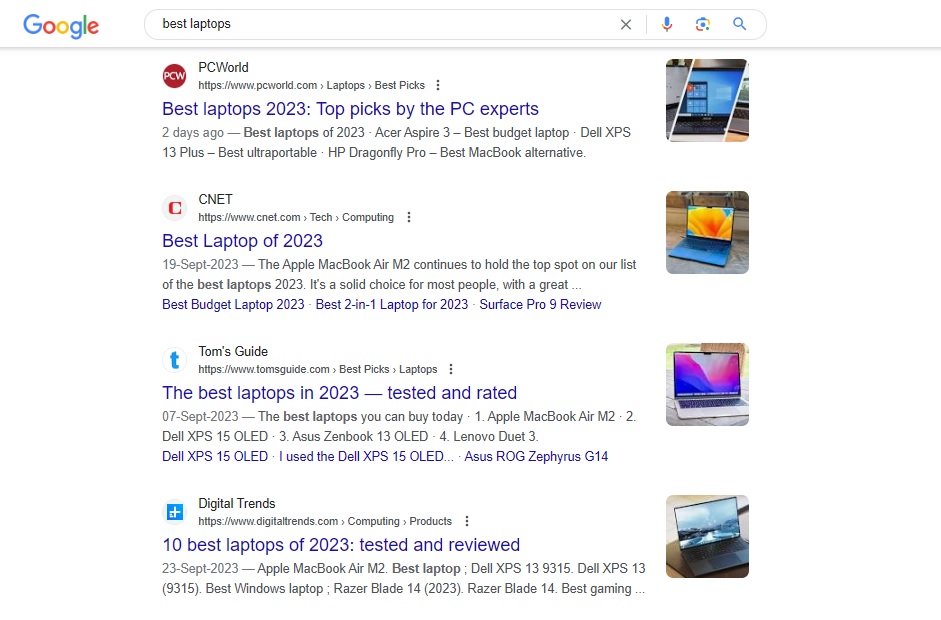
And if you scroll down, you will see Google also suggests related searches based on search intent.
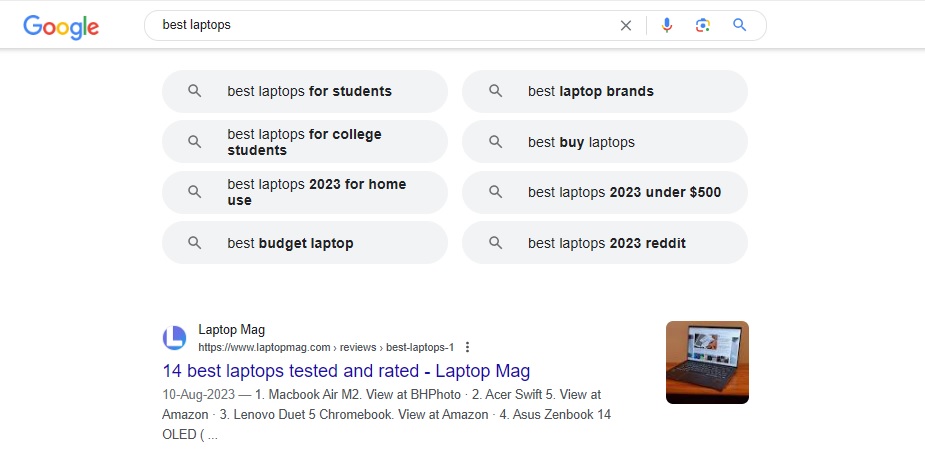
Simply put, Google and other search engines understand user intent and rank web pages that provide relevant information.
Why is Search Intent Important for SEO?
Search engines, including Google, strive to provide the best search experience to their users by providing the most relevant results. Regardless of the quality of the content, if the web page does not provide what the searcher expects, it may not rank in SERPs.
Therefore, optimizing content for search intent is critical for SEO and can help you achieve the following benefits:
Higher SEO Rankings
Google considers keywords and the content context when determining a page rank. It scans web pages to learn the deeper meaning of the content and ranks a web page only if it satisfies the keyword intent. Therefore, understanding search intent ensures your content ranks higher for the keyword.
Alignment with the Needs of Target Audience
Users have certain expectations whenever they conduct an online search. They type keywords in the search bar with the goal of getting desired information. Therefore, you satisfy your target audiences‘ needs if your content provides what they expect. In other words, optimizing content for search intent ensures it aligns with the target audiences’ needs.
Better User Experience
A thorough understanding of keyword intent enables you to craft content that satisfies users. You can choose the correct format and include the relevant information, providing the best experience to your users.
Broaden Audience Reach
An effective content marketing strategy focuses on reaching more people across all the buyer’s journey stages. However, many website visitors and potential leads come from organic searches. And such visitors may not be aware of your business until they find your webpage in SERPs. Therefore, if you create content that satisfies search intent, you broaden your audience reach by ranking for more keywords.
The Four Types of Search Intent
Search intent can be broadly divided into the following four categories:
Navigational Intent
The user intent is navigational when the user is already aware of the brand or business and conducts a search using the brand or website name. In other words, the user intends to navigate to a specific website or a webpage.
Informational Intent
The user intent is informational when they seek information, answers, or knowledge-based content. Informational intent is the most common among all types of search intent, as most people turn to search engines seeking information. How-to guides and tutorials are typical examples of informational intent. Whereas informational intent searches may include keywords like ‘what’, ‘how’, ‘where’, and ‘why’.
Commercial Intent
In commercial intent, the user aims to investigate and explore available options to help make a purchase decision. Search queries with commercial intent may include keywords like ‘best’, ‘review’, ‘top’, and ‘versus’. In contrast, the content types that satisfy commercial intent include list posts, comparisons, and reviews.
Transactional Intent
The user intent is transactional when the user intends to complete an action such as a purchase, registration, subscription, or download. In transactional intent, the users are looking for a webpage where they can complete their desired actions. They may also be looking for the best deals, discounts, or procedural details related to a purchase.
Transactional intent queries include keywords like ‘buy’, ‘sign up’, ‘download’, ‘discount’, ‘cheap’, and ‘coupon’. However, the content types that align with transactional intent are product, registration, or landing pages.
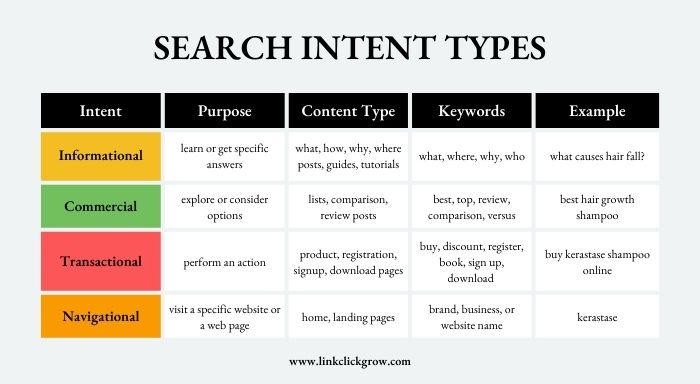
How to Optimize Content for Search Intent
Since keyword intent aligns with different stages of a buyer’s journey, crafting content that satisfies customers’ needs according to their position in the sales funnel is essential. Optimizing content for search intent also ensures you create suitable content for all stages of the buyer’s journey.
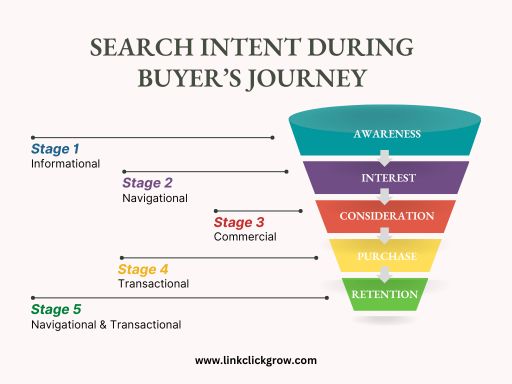
Below are the four steps you need to follow to optimize content for keyword intent:
Step 1: Determine the Search Intent for the Keyword
Before creating content, you must determine the search intent behind your target keyword. Learning about the keyword intent helps you create the right content type, i.e., a blog post, product page, category page, landing page, etc. Similarly, it enables you to craft content in the correct format if the content type is a blog post.
Mostly, the keywords are self-explanatory. It is evident from the choice of words what kind of content the searcher expects.
For example, you can easily guess the keyword “best laptops” has commercial intent. Similarly, it is evident that the keyword “buy Lenovo laptop” has a transactional intent.
However, the user intent is not always obvious. For example, guessing the intent behind the keyword “SEO tools” is difficult. It could be informational, i.e., the searcher intends to learn about SEO tools, or commercial, i.e., the searcher wants to investigate different SEO tools.
Regardless of whether the intent is obvious, it is recommended to consider the following ways to determine the type of content suitable for the keyword.
Check SERPs
One of the most effective ways to determine keyword intent is to check web pages that rank on Google’s first page. Those pages appear on Google’s first page because they match the search intent.
For example, for the keyword “plagiarism checker”, Google lists the following web pages on the first page.
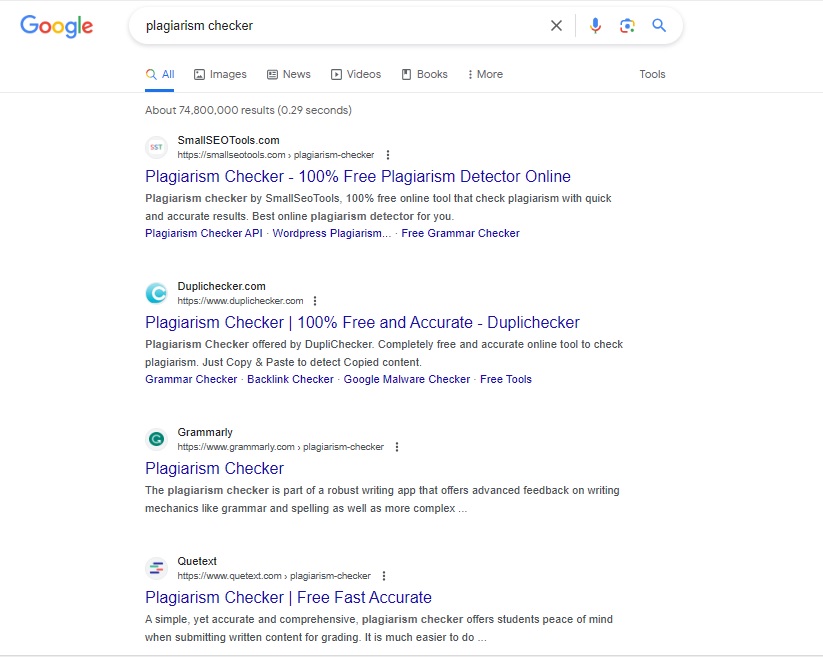
As you can see, all web pages are product pages. The searchers are not looking for information about plagiarism checkers and how they work. Instead, the user intent behind the keyword “plagiarism checker” is to find a tool for checking plagiarism.
Use SEMrush
Although investigating SERPs is a cost-effective method of determining search intent, tools are more helpful when discovering keyword ideas for content marketing.
Checking SERPs for a massive list of keyword ideas requires much time and effort. That is why I recommend using SEMrush.
Let’s say you want to determine the intent for the keyword “hair fall”. All you need to do is type the keyword in the keyword overview tool, and it will calculate the intent based on the words contained in the keyword and SERPs.
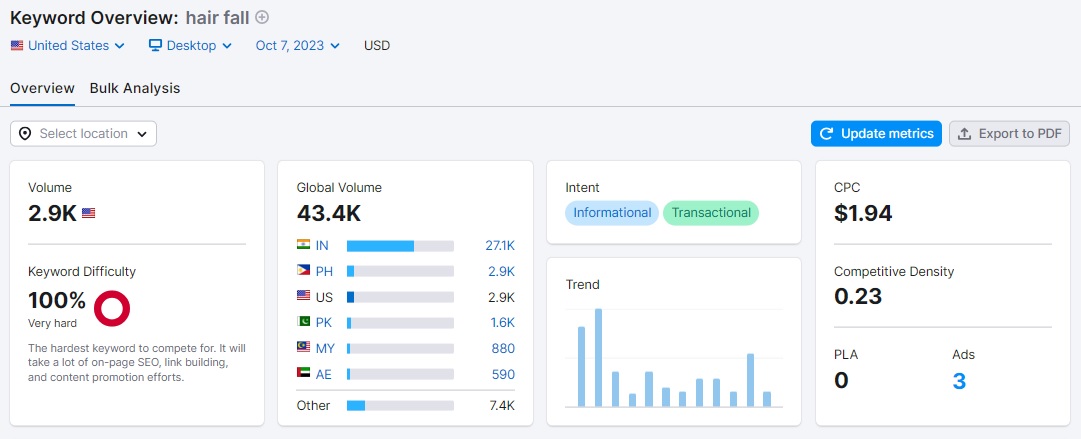
Similarly, if you are carrying out keyword research, SEMrush’s Keyword Magic Tool displays a separate column that indicates the intent type for each keyword.
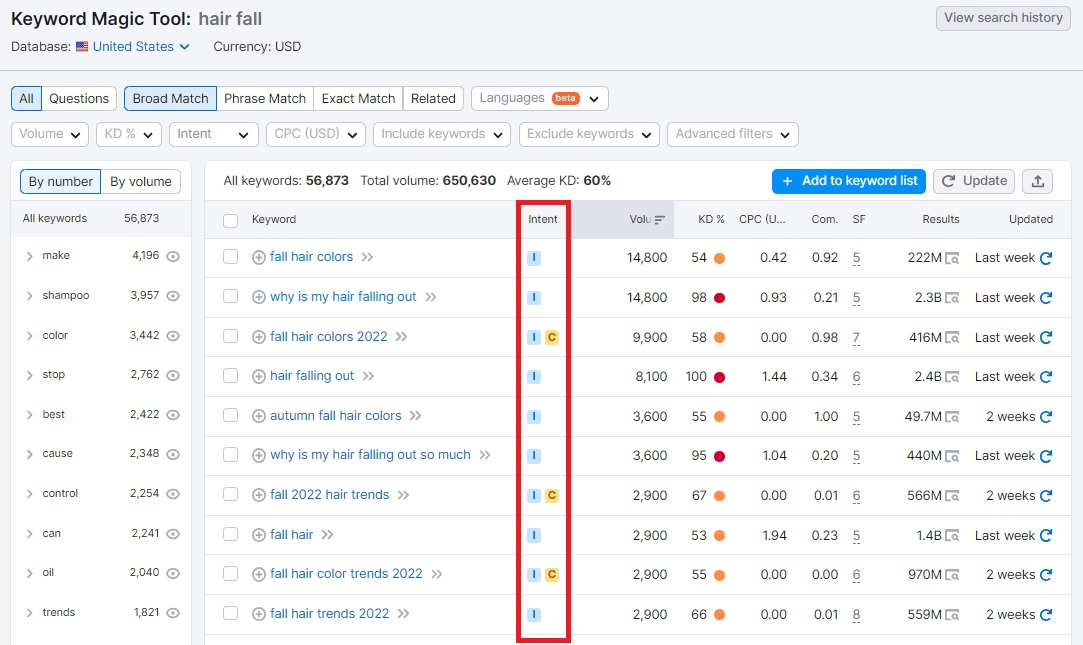
Another advantage of using SEMrush is that you can filter the keyword research results to show only a particular intent. It is beneficial when researching keywords for a specific buyer’s journey stage.
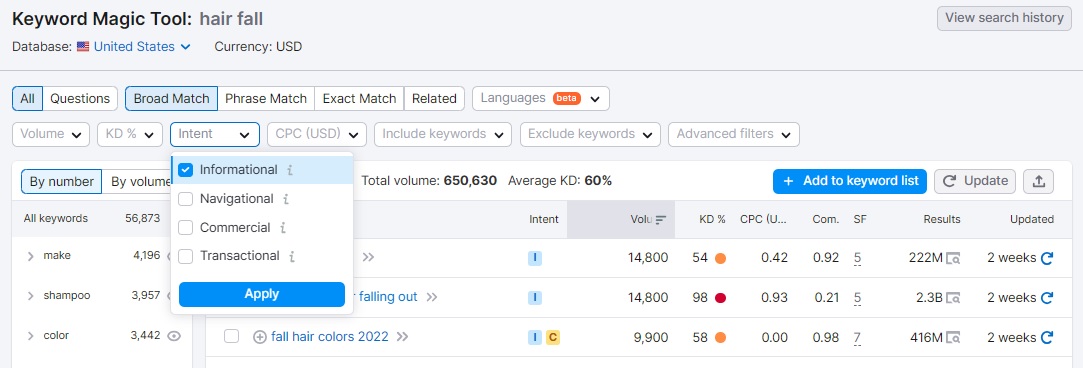
If you click on any of the keywords, SEMrush will take you to the keyword overview page, at the bottom of which you can see the SERP analysis section. In this section, you can check web pages that rank for the keyword. In short, you can check actual SERP results for every keyword suggestion.
Step 2: Find the Right Subtopics to Include in Your Content
Although creating the right content type based on keyword intent is crucial for ranking higher in SERPs, it is not enough. It is equally critical to include the relevant information and subtopics.
Again, proper analysis of SERPs can help you discover what makes the top web pages unique in the eye of Google. Analyze the top 10 web pages to learn about the following:
- Content depth and the average length of post.
- The common subtopics in top results.
- The unique selling point of each post.
Alternatively, you can use an AI tool like SurferSEO and Frase to generate an outline for your content based on the top ranking content.
Regardless of which method you use to select the subtopics to be included in your content, your aim should be to create a better content. You can create better content by providing additional information, data, or examples. You can also include more visuals for better user experience.
Besides studying SERP results, I recommend checking the ‘People Also Ask’ section. In this section, Google displays common queries people ask about the same topic or keyword.
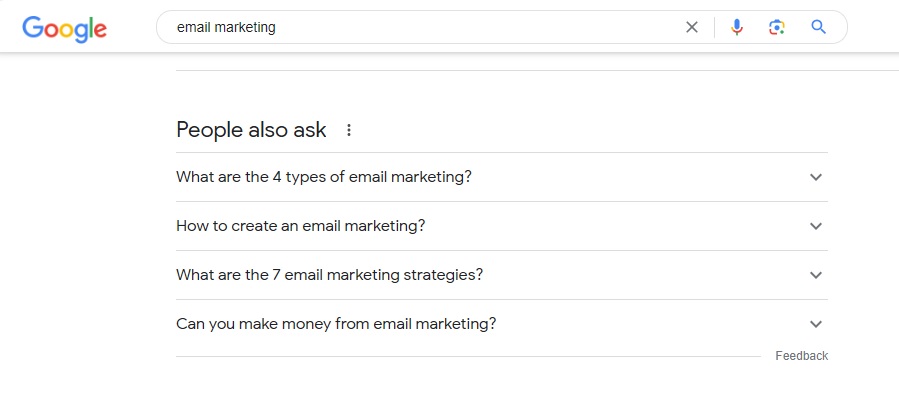
Since these are the questions asked by people who searched for the main keyword, answering them ensures your content satisfies the user intent.
Alternatively, you can use SEMrush’s Keyword Magic Tool to get an exhaustive list of questions that contain the focus keyword. One significant advantage of using SEMrush is that it displays the average monthly search volume for all suggested keyword questions.
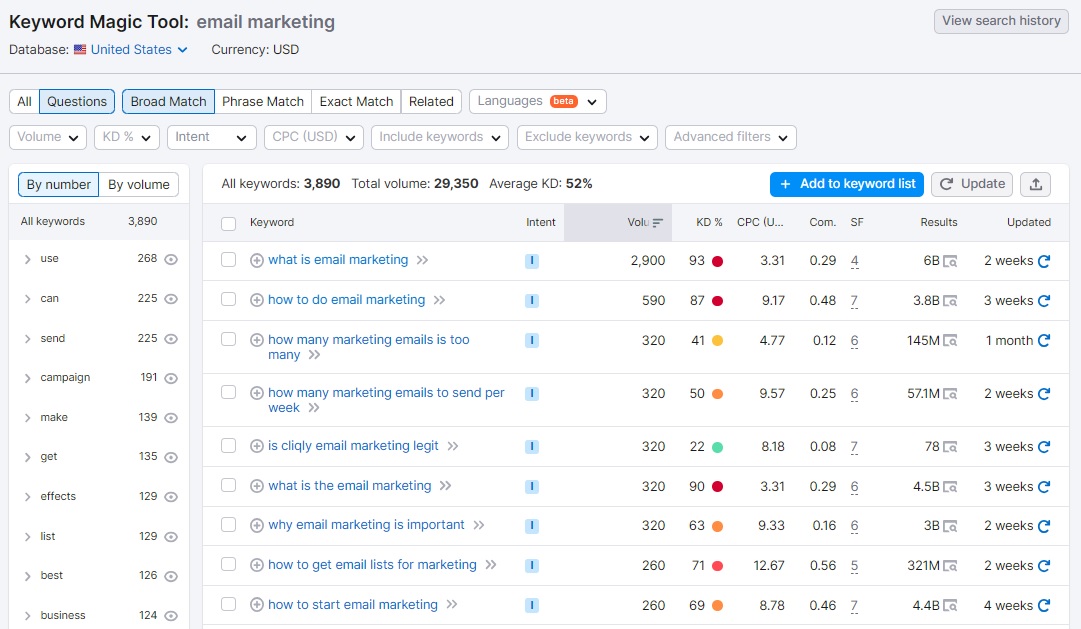
Another effective way to nail search intent is to look for questions your target audience asks on Q&A forums. Those questions tell what your target audience is looking for.
Search Intent Best Practices
The following are a few best practices to optimize content for keyword intent.
Optimize for Users
It is crucial to optimize your content for the users. After all, search engines also learn about search intent by observing how users interact with the search results.
If a user clicks on a SERP result, spends a lot of time on the page, and does not return to SERPs to check another webpage, the user is satisfied. That’s how search engines learn what the user is looking for.
Even if you include all relevant information, if your web page is not user-friendly, searchers will quickly leave it, making the bounce rate high. As a result, Google would believe your content does not satisfy users.
To optimize content for users, limit pop-ups, organize content into subheadings, include visuals, and use a readable font.
Update Existing Content
One of the common reasons behind pages not ranking in Google is that they do not satisfy user intent. It is equally important to optimize existing content for the search intent. It is crucial to do so to ensure you are taking advantage of ranking opportunities.
Remember, when optimizing old content, pay attention to the content type and format.
Be Wise with Keywords with Multiple Search Intent
You will find keywords with multiple search intents during your content marketing journey.
For example, for the keyword “Web hosting services”, Google’s first page lists the following pages:
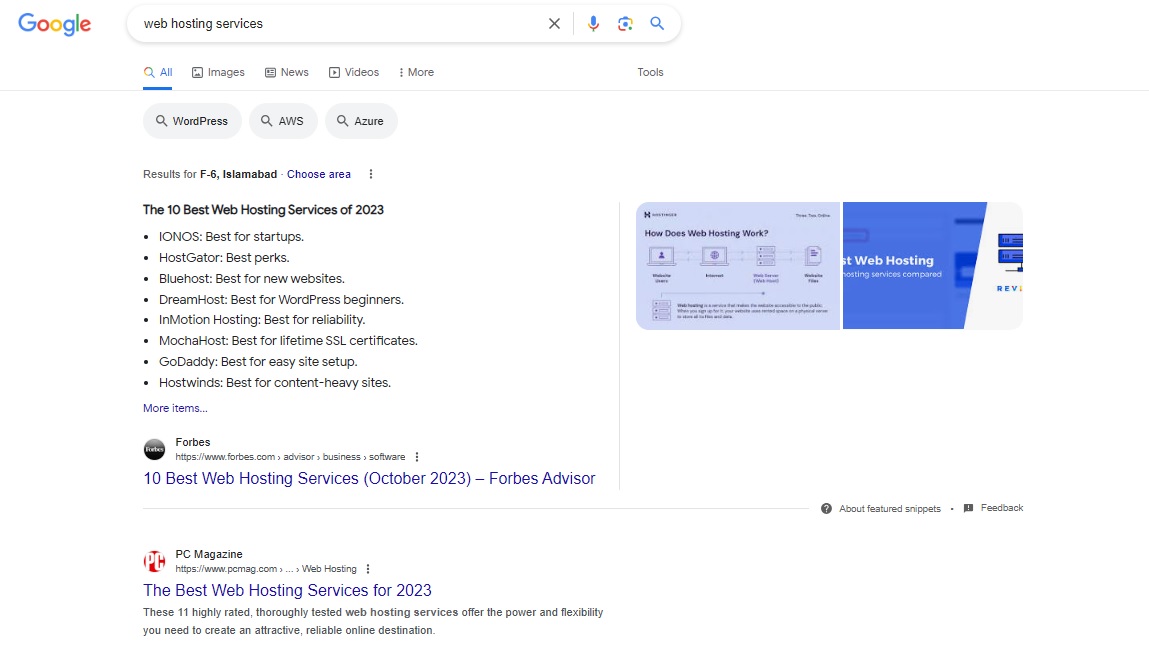
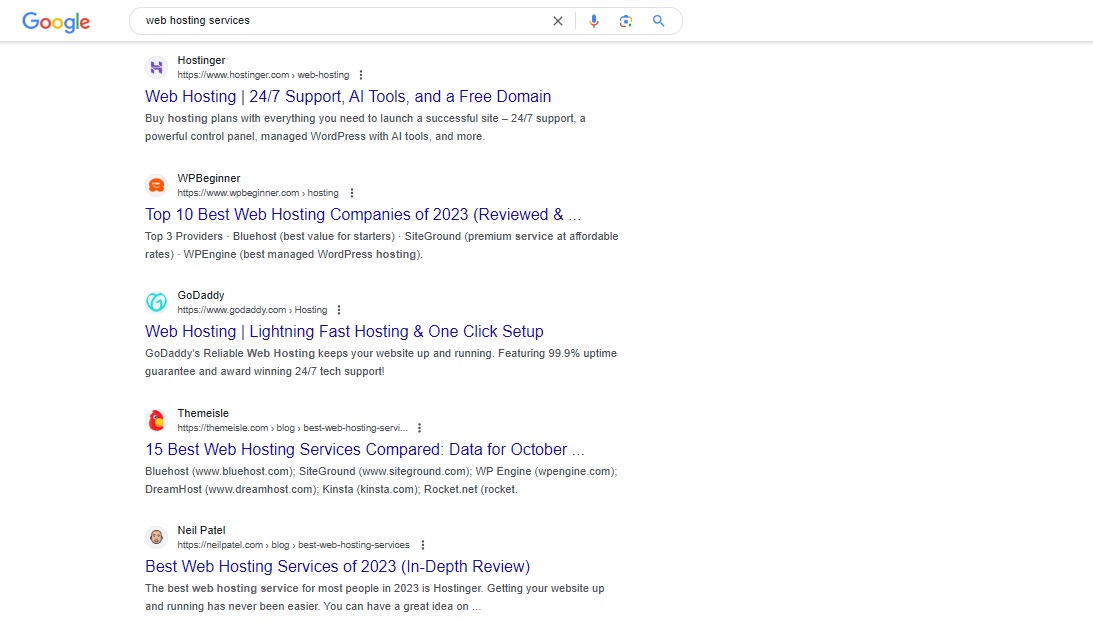
As you can see, most web pages are list posts. However, there are also a few product pages. Now, if you offer web hosting services, it would be better to create a product page. But you should create a list post comparing different services if you do not provide services.
In short, you can optimize for any user intent depending on your business goals. However, remember to optimize content well to rank on Google’s first page.
Ensure CTAs Match the Search Intent
When optimizing content for search intent, it is critical to ensure the CTAs also match the intent. For example, if you are creating informational content around the keyword ’email marketing’, there are better ideas than including a CTA that prompts users to sign up for your email marketing tool. Preferably, inviting readers to sign up for a newsletter would be best. After they become leads, nurture them through email campaigns, convincing them to become customers.
Conclusion
Optimizing content for search intent is critical for making your way up to the first page of SERPs. It helps you better understand your target audience’s needs and enables you to meet them through content. Most importantly, it helps broaden your audience reach. Therefore, if you still need to optimize content for keyword intent, do it now to improve your ranking, traffic, and sales.

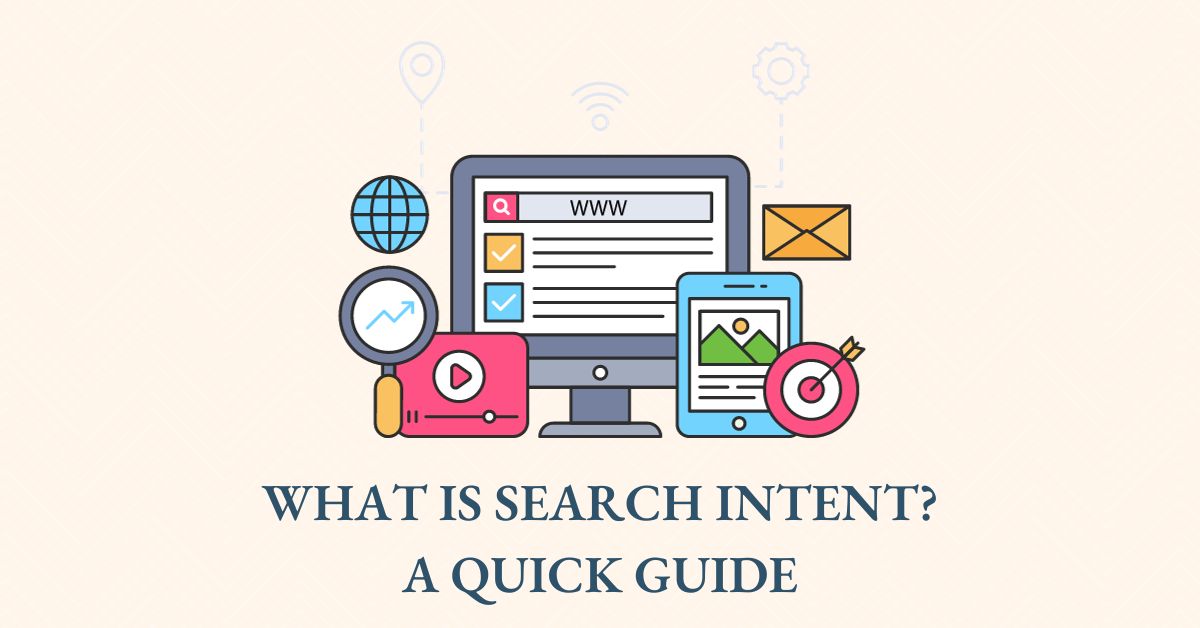
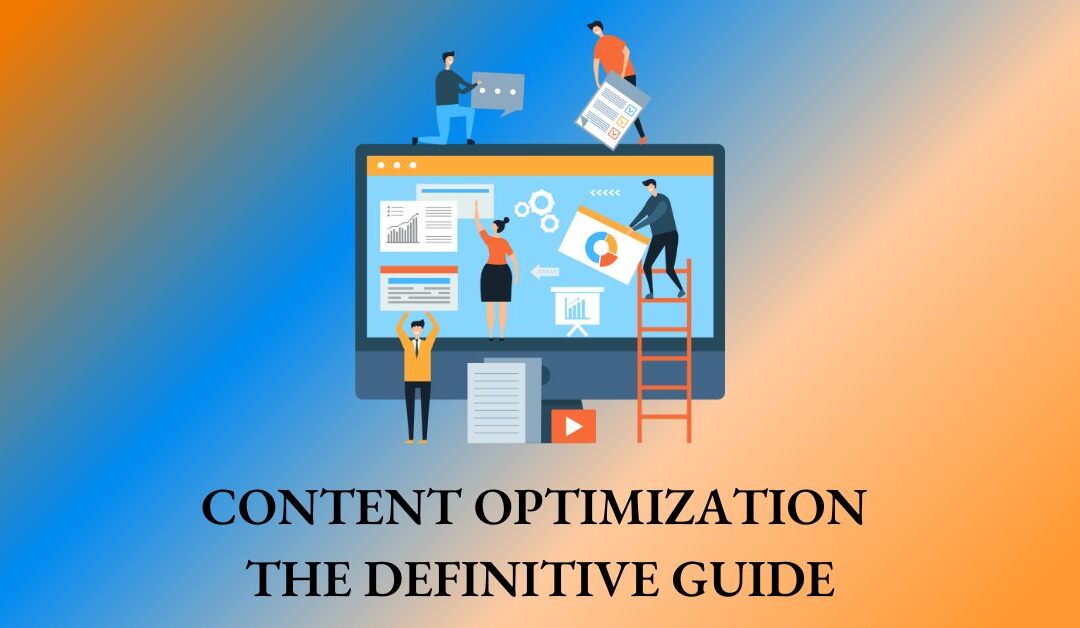
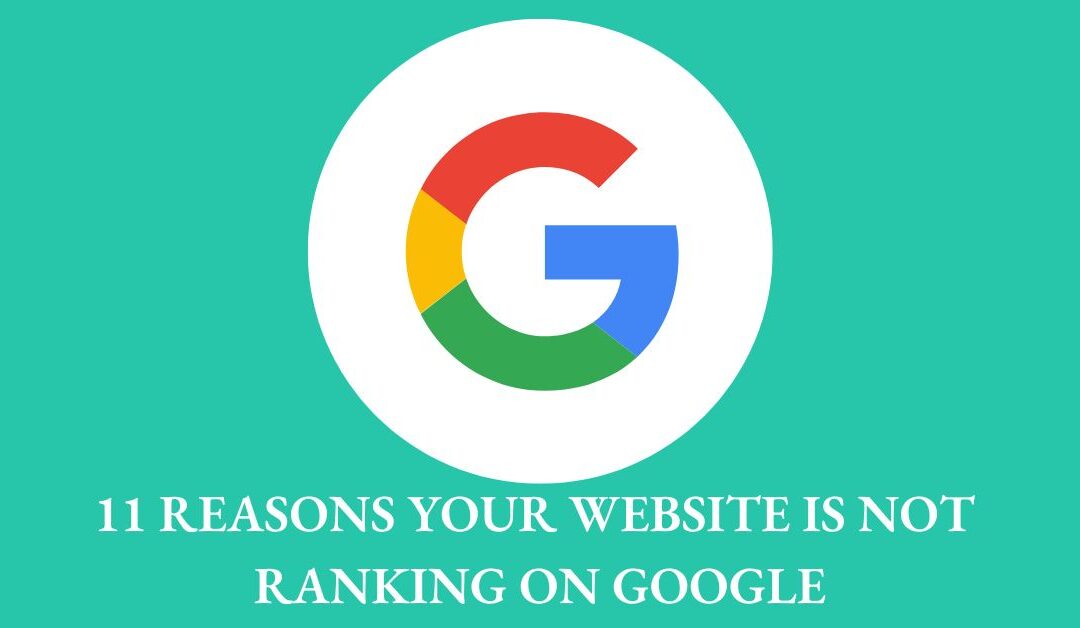
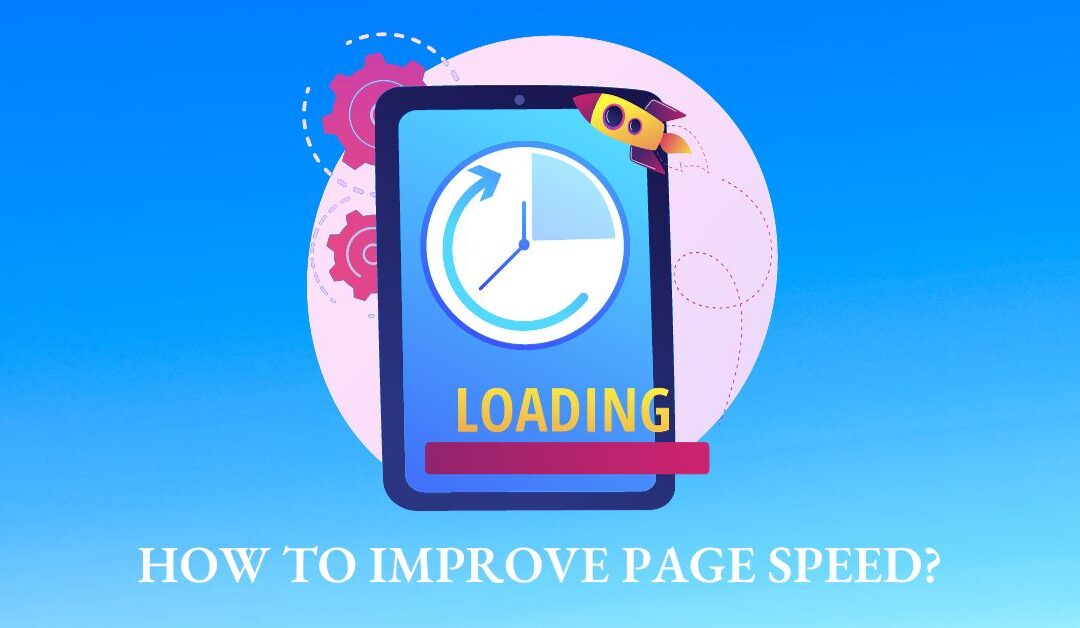

0 Comments